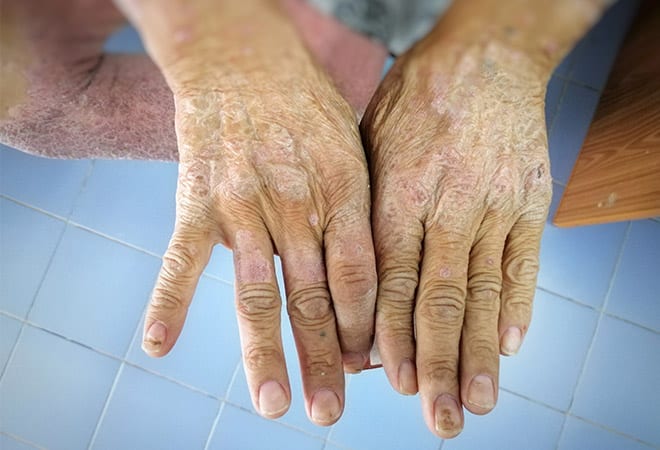
Tonsillitis is a common condition characterized by inflammation of the tonsils, the two lymphoid tissues located at the back of the throat. It can affect individuals of all ages, though it’s most prevalent in children and young adults. Caused by viral or bacterial infections, tonsillitis can range from mild to severe, sometimes requiring surgical intervention.
What Is Tonsillitis?
Tonsillitis occurs when the tonsils, which act as part of the body’s immune system to trap pathogens entering through the mouth or nose, become infected or inflamed. According to the Mayo Clinic, tonsillitis can be caused by viruses or bacteria, with symptoms ranging from sore throat to difficulty swallowing. While most cases resolve with conservative treatment, recurrent or severe cases may necessitate tonsillectomy (surgical removal of the tonsils).
According to Cleveland Clinic, tonsils are part of the lymphatic system, helping to fight infections, but they can become overwhelmed, leading to inflammation and symptoms. Tonsillitis can be acute (short-term), chronic (persistent), or recurrent (multiple episodes).
Key Characteristics of Tonsillitis
- Viral or Bacterial Origin: Common causes include viruses like Epstein-Barr or bacteria like Streptococcus pyogenes (strep throat).
- Age Prevalence: Most common in children aged 5–15, though adults can be affected.
- Potential Complications: Untreated bacterial tonsillitis can lead to issues like abscesses or rheumatic fever.
Osteoarthritis: Causes, Symptoms, Prevention, and Treatment
Causes of Tonsillitis
Tonsillitis is primarily caused by infections, with bacteria and viruses being the main culprits. The Centers for Disease Control and Prevention (CDC) highlights that bacterial tonsillitis, particularly from Streptococcus (strep throat), is a significant concern due to its potential complications if untreated.
1. Viral Causes
Viruses are the most common cause of tonsillitis, especially in young children. Common viral culprits are:
- Adenoviruses
- Epstein-Barr virus (linked to mononucleosis)
- Influenza virus
- Rhinoviruses (common cold viruses)
- Cytomegalovirus
Viral tonsillitis often resolves without specific treatment but can still cause significant discomfort.
2. Bacterial Causes
The most common bacterial cause is Streptococcus pyogenes (group A streptococcus), responsible for strep throat. Bacterial tonsillitis requires prompt treatment to prevent complications like peritonsillar abscess or kidney issues. Other bacteria, such as Staphylococcus aureus or Haemophilus influenzae, may also be involved, though less frequently.
3. Other Risk Factors
- Age: Children and teens are more susceptible due to frequent exposure to pathogens in schools.
- Close Contact: Sharing utensils or being in crowded environments increases transmission risk.
- Weakened Immune System: Conditions like HIV or chronic illnesses can increase susceptibility.
- Environmental Factors: Exposure to irritants like cigarette smoke may exacerbate symptoms.
Symptoms of Tonsillitis
Symptoms of tonsillitis vary depending on the cause and severity but typically involve throat discomfort and systemic signs. Common symptoms are:
Common Symptoms
- Sore Throat: Pain or scratchiness, often worsened by swallowing.
- Red, Swollen Tonsils: Visible inflammation, sometimes with white patches or pus (common in bacterial cases).
- Difficulty Swallowing: Due to pain or swelling.
- Fever: Often higher in bacterial infections.
- Swollen Lymph Nodes: Tender glands in the neck.
- Hoarse Voice or Loss of Voice: Due to inflammation affecting the vocal cords.
- Bad Breath: Caused by bacterial buildup or pus.
How Does Lupus Affect the Skin, Joints, and Organs?
Additional Symptoms
- Headache
- Ear pain (referred pain from the throat)
- Fatigue or malaise
- Abdominal pain (more common in children with strep throat)
- Rash (in cases linked to scarlet fever)
The American Academy of Otolaryngology–Head and Neck Surgery (AAO-HNS) notes that symptoms typically last 7–10 days in viral cases, while bacterial tonsillitis may require antibiotics for faster resolution.
Diagnosing Tonsillitis
Accurate diagnosis is essential to determine the cause and guide treatment.
Diagnostic Methods
- Physical Exam: Doctors inspect the throat for redness, swelling, or pus and check for swollen lymph nodes.
- Throat Swab:
- Rapid Strep Test: Detects group A streptococcus in minutes.
- Throat Culture: Confirms bacterial infection if the rapid test is negative but suspicion remains.
- Blood Tests: For suspected viral causes like mononucleosis, a complete blood count or monospot test may be used.
- Imaging: Rarely, CT scans or ultrasounds assess complications like abscesses.
It is important to medical attention for severe sore throat, fever above 101°F (38.3°C), or symptoms lasting more than a few days.
Understanding and Managing Low Blood Sugar
Treatment Options for Tonsillitis
Treatment depends on the cause (viral or bacterial), severity, and frequency of episodes. Treatment options include:
1. Supportive Care for Viral Tonsillitis
Viral tonsillitis typically resolves on its own when you observe the following:
- Rest: Allows the body to fight the infection.
- Hydration: Drinking fluids prevents dehydration and soothes the throat.
- Pain Relief: Over-the-counter medications like acetaminophen or ibuprofen reduce pain and fever.
- Throat Soothers: Lozenges, warm tea with honey, or gargling saltwater can ease discomfort.
- Humidifiers: Moist air prevents throat dryness.
2. Antibiotics for Bacterial Tonsillitis
Bacterial tonsillitis, particularly strep throat, requires antibiotics. The CDC recommends penicillin or amoxicillin as first-line treatments, with alternatives like azithromycin for penicillin-allergic patients. Completing the full course is critical to prevent complications like rheumatic fever.
3. Managing Complications
Severe cases may lead to complications like peritonsillar abscess (a pus-filled pocket near the tonsils). Abscesses may require drainage or hospitalization.
4. Lifestyle and Home Remedies
- Avoid irritants like smoke.
- Eat soft foods (e.g., soup, yogurt) to minimize swallowing pain.
- Maintain good hygiene to prevent spreading the infection.
Zika Virus Infection: Symptoms and Pregnancy Risks
When to Consider Tonsillectomy
Tonsillectomy, the surgical removal of the tonsils, is considered for recurrent, chronic, or severe tonsillitis.
Indications for Tonsillectomy
- Recurrent Tonsillitis: Seven or more episodes in one year, five per year for two years, or three per year for three years.
- Chronic Tonsillitis: Persistent symptoms lasting over three months despite treatment.
- Complications: Peritonsillar abscess, airway obstruction, or sleep apnea caused by enlarged tonsils.
- Suspected Malignancy: Rarely, tonsil tissue may be removed to rule out cancer.
Tonsillectomy Procedure
Performed under general anesthesia, tonsillectomy typically takes 30–60 minutes. The Cleveland Clinic describes the methods like cold knife dissection, electrocautery, or laser techniques. Recovery takes 1–2 weeks, with potential side effects like throat pain or temporary changes in taste.
Risks of Tonsillectomy
- Bleeding (most common in the first 24 hours or 5–10 days post-surgery)
- Infection
- Pain or difficulty swallowing
- Rare anesthesia complications
Post-Tonsillectomy Care
- Stay hydrated with water or ice pops.
- Use prescribed pain relievers as directed.
- Avoid strenuous activity for two weeks.
- Watch for signs of complications, like excessive bleeding or fever.
Rheumatoid Arthritis: Causes, Symptoms, Prevention, and Treatment
Preventing Tonsillitis
While not all cases can be prevented, reducing infection risk is possible.
- Practice Good Hygiene: Wash hands frequently and avoid sharing utensils.
- Avoid Contact with Sick Individuals: Limit exposure to those with sore throats or respiratory infections.
- Strengthen Immunity: A balanced diet, adequate sleep, and regular exercise support immune health.
- Vaccinations: Stay up-to-date on vaccines to prevent infections like influenza that can lead to tonsillitis.
Supporting Someone with Tonsillitis
If someone you know has tonsillitis, you can help the person by:
- Encouraging rest and hydration.
- Helping to prepare soft, easy-to-swallow foods.
- Assisting with medication schedules, especially antibiotics.
- Monitoring the condition for worsening symptoms, like high fever or breathing difficulties, and seek medical help if needed.
Complications of Untreated Tonsillitis
Untreated bacterial tonsillitis can lead to serious complications, such as:
- Peritonsillar Abscess: A pus-filled pocket requiring drainage.
- Rheumatic Fever: A rare but serious condition affecting the heart and joints.
- Post-Streptococcal Glomerulonephritis: Kidney inflammation following strep infection.
- Obstructive Sleep Apnea: Enlarged tonsils may block airways during sleep.
Autoimmune Disorders: Recognizing the Signs, Diagnosis, and Treatment
Tonsillitis is a common but manageable condition caused by viral or bacterial infections. By recognizing symptoms, seeking timely diagnosis, and following appropriate treatment, most cases resolve without complications. For recurrent or severe cases, tonsillectomy may be necessary, guided by specific criteria. If you or someone you know experiences persistent or severe symptoms, consult a healthcare provider, ideally an ENT specialist, for personalized care.







